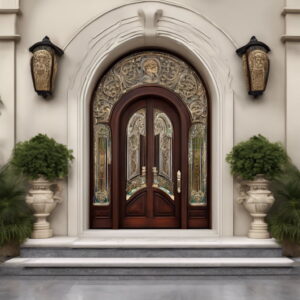Imagine waking up to the sound of the waves crashing against the shore, stepping out onto your balcony, and being greeted by a view that takes your breath away.
This is what a luxury resort promises its guests – an unforgettable experience that leaves them craving for more.
But what goes into designing such a resort?
From resort design concepts to architecture and requirements, it takes careful planning and execution to create a space that embodies luxury in every corner.
In this article, we will take you through the elements that define luxurious resorts, discuss some of the best resort designs, and provide you with some resort design ideas.
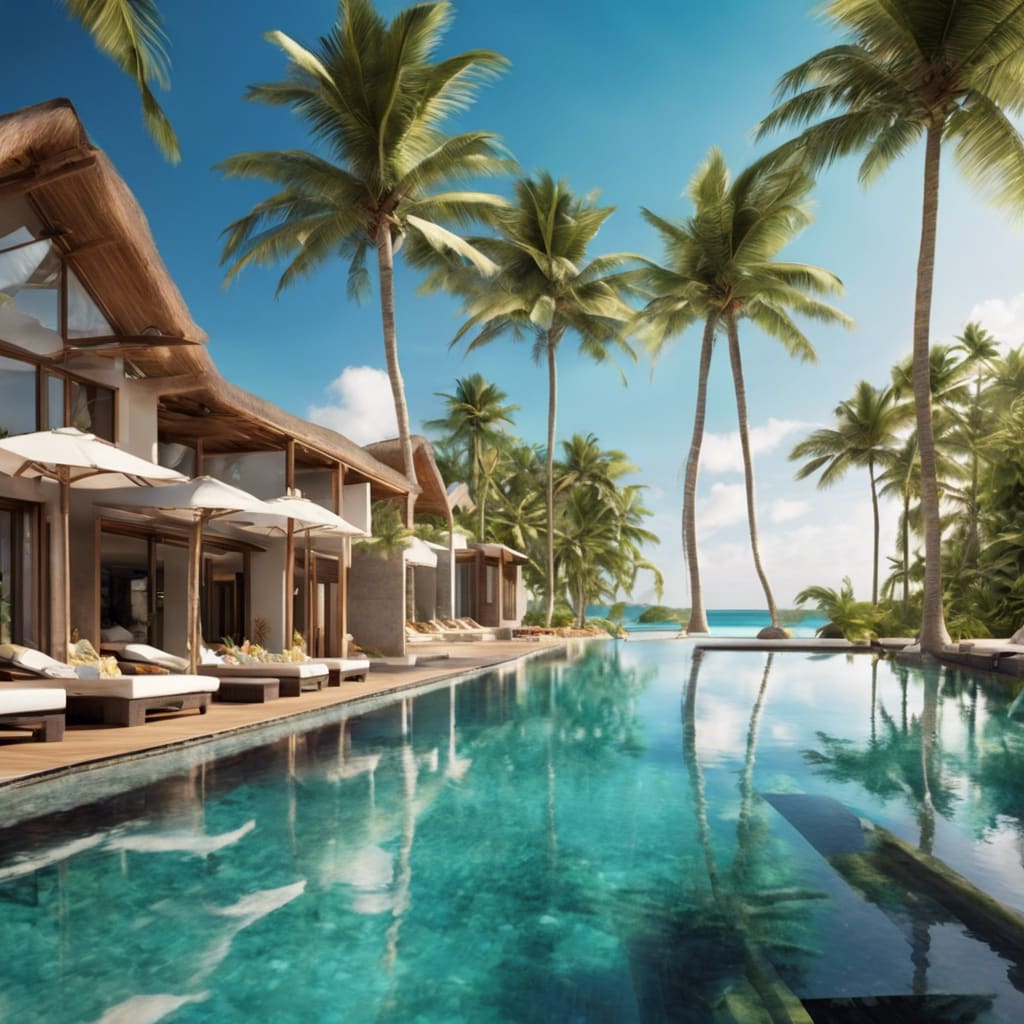
Resort design concept
To create a resort, first think of a unique idea for the guests who will visit. It’s important to blend the design with nature and make it look beautiful.
Pay close attention to small details, add luxury finishes, and offer great services to give guests an exceptional experience.
Design functional areas such as spas or outdoor lounges to make guests happy. Take care of the environment by using green technology in the interior and exterior designs.
Resort design plan
The creation of luxury resorts involves a meticulous process that encompasses various elements to provide guests with an unforgettable experience.
- Sustainability is a key focus in modern resort design, ensuring that ecological considerations are integrated into every aspect of the property.
- When designing a luxury resort, careful attention is paid to the location and surroundings to maximize the natural beauty and create unique atmospheres for guests to enjoy.
- The provision of upscale amenities and facilities adds to the overall guest experience, offering convenience and comfort at every turn.
- Sustainable practices are increasingly important in resort design, with eco-friendly initiatives and energy-efficient solutions being incorporated into the construction and operation of these establishments.
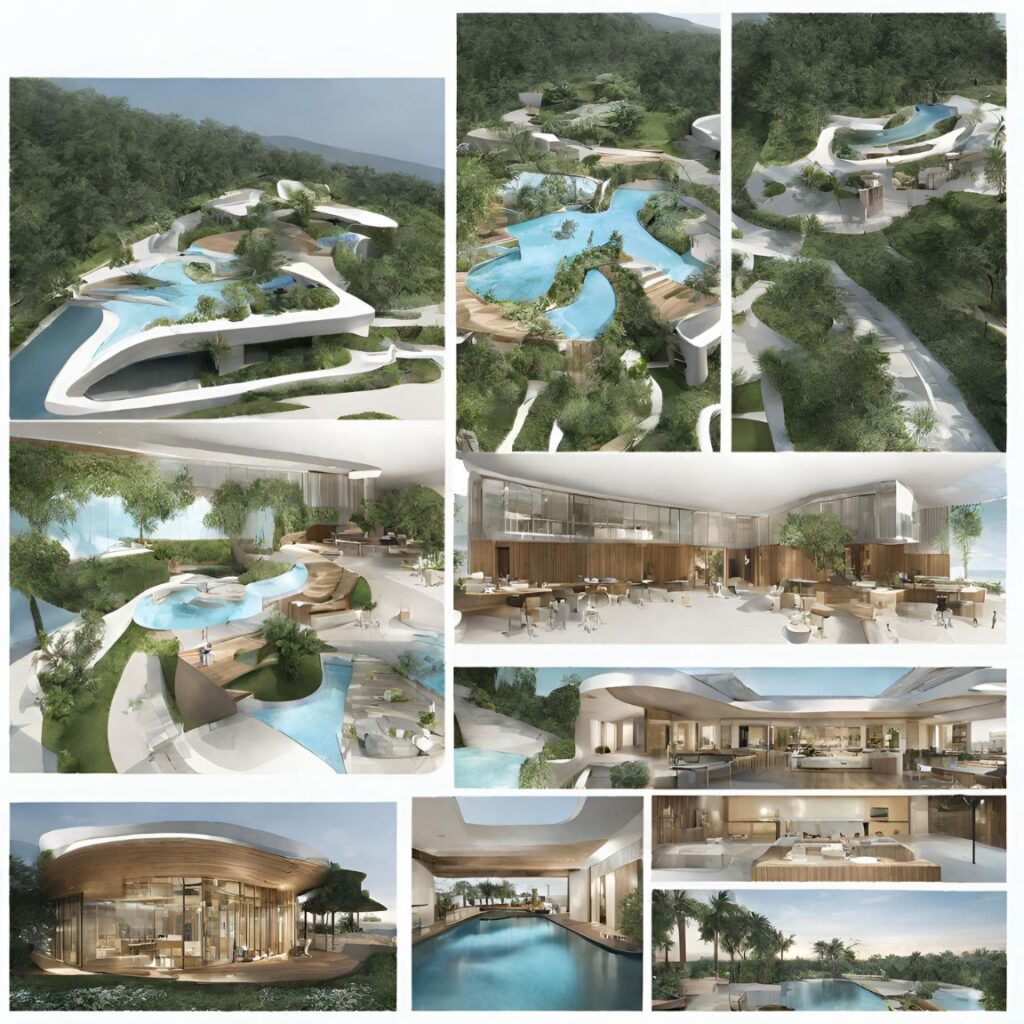
- Safety is paramount in luxury resort design, with measures put in place to ensure the well-being of guests and staff alike.
- By striking a balance between interior opulence and landscape aesthetics, designers can create a seamless transition between indoor and outdoor spaces, enhancing the overall guest experience.
- Consideration of factors such as terrain, vegetation, ventilation, and accommodation requirements further contribute to creating a serene and luxurious setting for visitors.
Each aspect of the design contributes to crafting a memorable stay for those seeking indulgence and relaxation in a lavish setting.
Resort design architecture
Resort architecture is a specialized field that caters to creating a unique and memorable experience for guests while blending with the surrounding environment and prioritizing sustainability.
Here’s an overview of key aspects to consider:
Architectural Styles
- Vernacular architecture: Drawing inspiration from local building styles and materials fosters a sense of place and cultural immersion.
- Biophilic design: Incorporating natural elements like open spaces, natural light, and abundant greenery promotes connection with nature and well-being.
- Minimalist design: Clean lines, simple forms, and local materials create a sense of serenity and harmony with the surroundings.
- Sustainable design: Using eco-friendly materials, incorporating renewable energy sources, and minimizing environmental impact are crucial considerations.
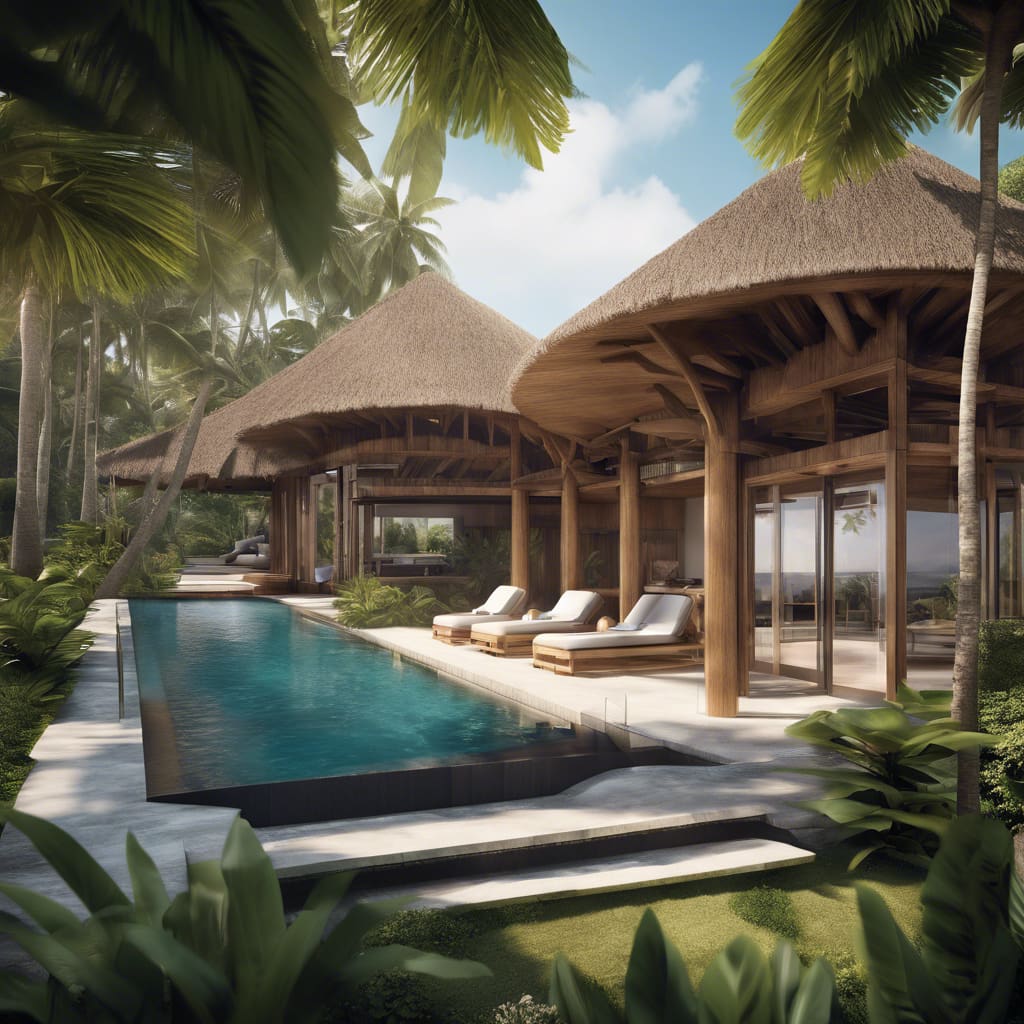
Building Materials
- Locally sourced and sustainable materials: Bamboo, recycled wood, adobe, and locally quarried stone can reduce the resort’s carbon footprint and support local economies.
- Natural ventilation and lighting: Utilizing strategically placed windows, skylights, and open floor plans maximizes natural light and air circulation, reducing reliance on artificial resources.
- Climate-adaptive design: Adapting the design to the specific climate of the location through features like shading elements, water management systems, and insulation strategies.
Guest Accommodations
- Bungalows: Elevated or staggered bungalows offer privacy, minimize ground disturbance, and provide stunning views.
- Overwater bungalows: In suitable locations, these offer a unique experience and minimize land impact.
- Eco-pods or tiny houses: These minimize construction footprint and prioritize energy efficiency.
- Traditional structures: Integrating local building techniques and materials can showcase cultural heritage.
Public Areas
- Open-air spaces: Maximize connection with nature by incorporating outdoor terraces, restaurants, and reception areas.
- Sustainability features: Implement green roofs, rainwater harvesting systems, and solar panels for energy generation.
- Locally inspired design: Use local art, craftsmanship, and materials to create a unique aesthetic.
- Blending with nature: Utilize landscaping to seamlessly integrate buildings with the surrounding environment.
By carefully considering architectural styles, sustainable materials, and a thoughtful approach to blending with the environment, resort design can create a luxurious and memorable experience for guests while minimizing environmental impact and fostering a connection with nature.

Resort design requirements
Resort design requirements fall into two broad categories: functional requirements and experiential requirements. Both are crucial for creating a successful resort that caters to the needs of guests and operates efficiently.
- Prioritize breathtaking views and natural surroundings to create a serene and immersive guest experience.
- The chosen site should offer ample space for guest comfort.
- Upscale amenities such as spa facilities, fine dining options, and recreational activities can be incorporated to cater to guests’ diverse preferences.
- Embrace sustainability in the resort design to minimize environmental impact.
- Integrate eco-friendly practices and designs, such as using renewable energy sources and implementing waste reduction strategies.
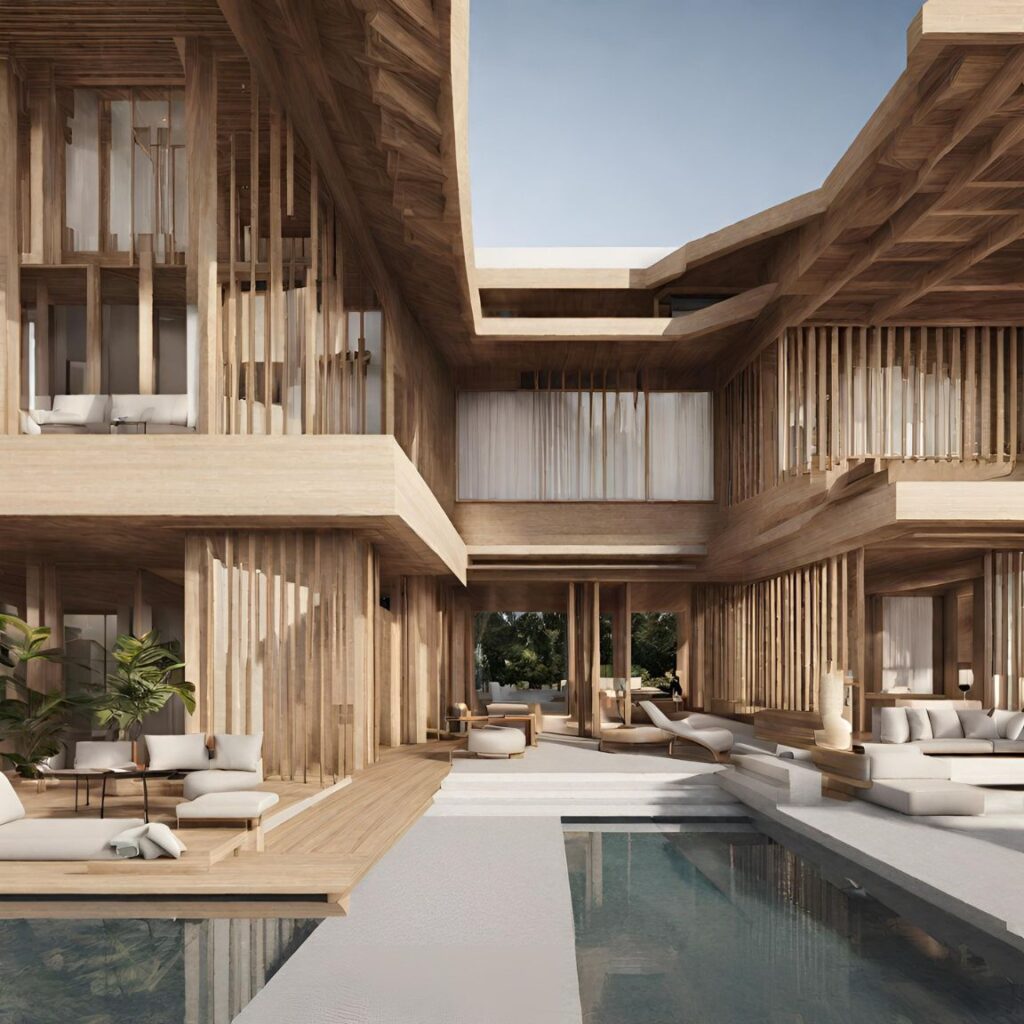
- Modern technology integration can enhance the overall guest experience by providing convenience and efficiency in services.
- Consider the topography and greenery of the location when planning landscape design to create a harmonious environment that blends with natural surroundings.
- Proper ventilation and thoughtful accommodation layout are key factors that contribute to a luxurious guest experience.
- Attention to detail in both interior design elements and landscape architecture will help create a cohesive and visually appealing environment for guests.
By carefully considering both the functional and experiential requirements, resort design can strike a balance between creating a comfortable and memorable guest experience, operating efficiently, and minimizing environmental impact.
Best resort design
There’s no single “best” resort design as it depends on various factors like location, target audience, and budget. However, some widely admired designs incorporate these elements:
- Sustainable practices: Minimizing environmental impact through features like renewable energy sources, water conservation methods, and local, sustainable materials.
- A seamless blend with nature: Integrating the resort’s architecture and landscaping with the surrounding environment to create a sense of harmony and immersion.
- Unique and memorable guest experience: Offering a variety of amenities, activities, and design elements that cater to guests’ interests and create lasting memories.
Here are some examples of different resort design approaches:
Modern Resort House Design
- Embraces sleek lines, innovative materials, and cutting-edge technology.
- Open floor plans and floor-to-ceiling windows for natural light and views.
- Seamless indoor-outdoor living spaces.
- Minimalist furnishings and neutral color palettes.
- Prioritizes comfort, convenience, and style.
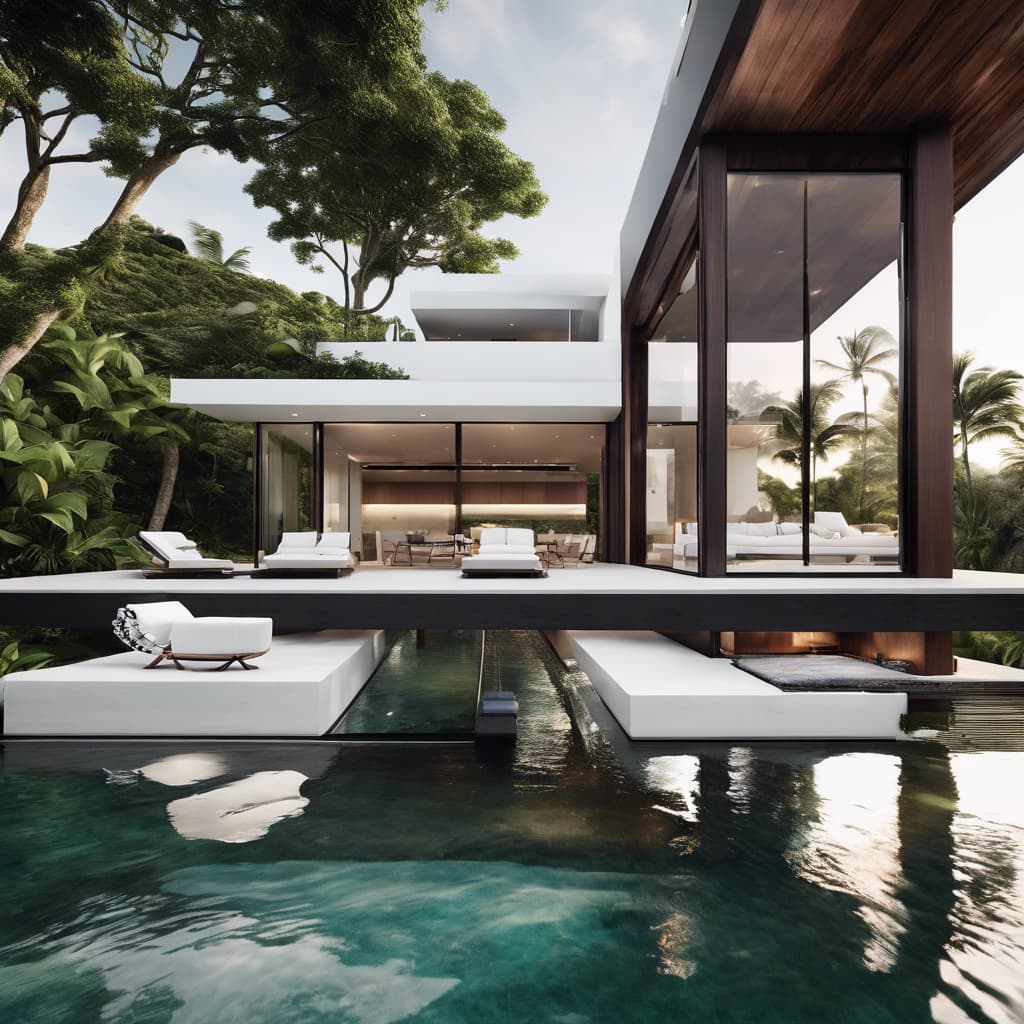
Simple Resort Design
- Focuses on creating a tranquil and unpretentious environment.
- Incorporates traditional architectural elements and natural materials.
- Understated decor for rustic elegance.
- Cozy accommodations and inviting communal spaces.
- Designed for relaxation and connection with nature.
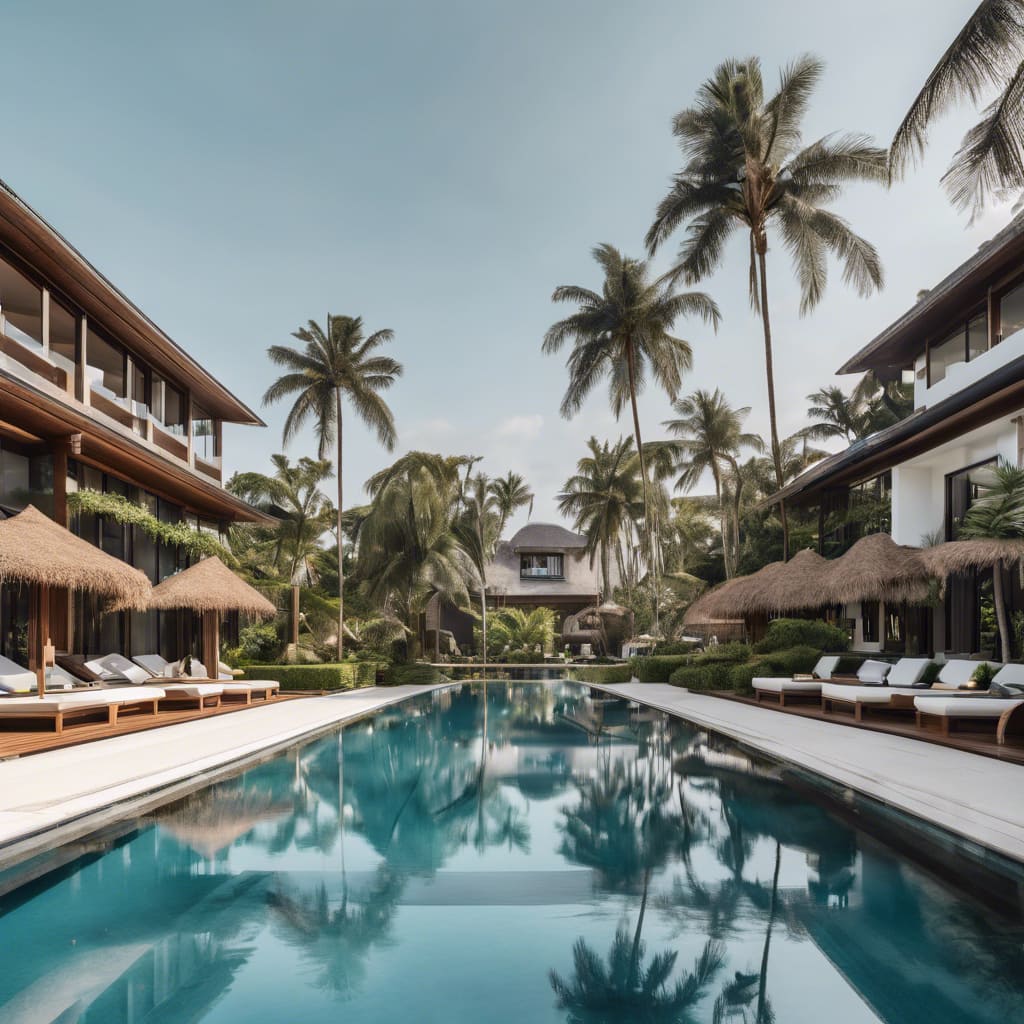
Simple Mini Resort Design
- Offers all amenities and comforts on a smaller scale.
- Intimate accommodations and personalized service.
- Compact yet well-appointed guest rooms.
- Communal dining areas and inviting outdoor spaces.
- Emphasis on quality, attention to detail, and thoughtful touches.
Resort design ideas
Here are some inspiring ideas to spark your creativity for different resort designs:
Small Resort Design Ideas
- Glamping Tents: Offer a luxurious camping experience with spacious, furnished tents featuring private decks and en-suite bathrooms.
- Container Resort: Upcycle shipping containers into unique and eco-friendly guest cottages with modern amenities.
- Tiny House Village: Create a charming and intimate atmosphere with a collection of tiny houses, each with its unique design and personality.
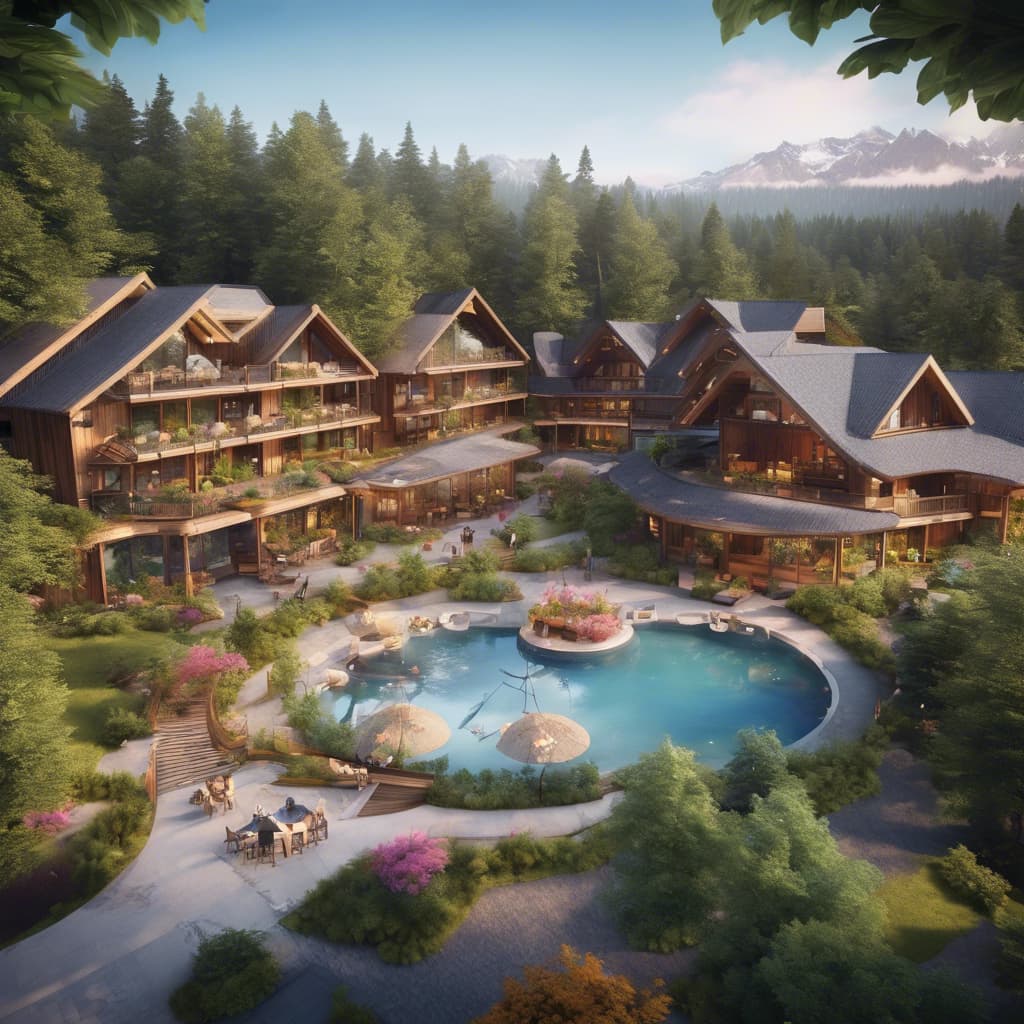
Beach Resort Design Ideas
- Overwater Bungalows: Provide guests with direct access to the water and stunning ocean views from private bungalows built on stilts over the water.
- Beachside Cabanas: Offer a relaxed and casual atmosphere with thatched-roof cabanas situated directly on the beach.
- Cliffside Villas: Create a luxurious and exclusive experience with villas built into cliffs, offering breathtaking ocean views and private infinity pools.
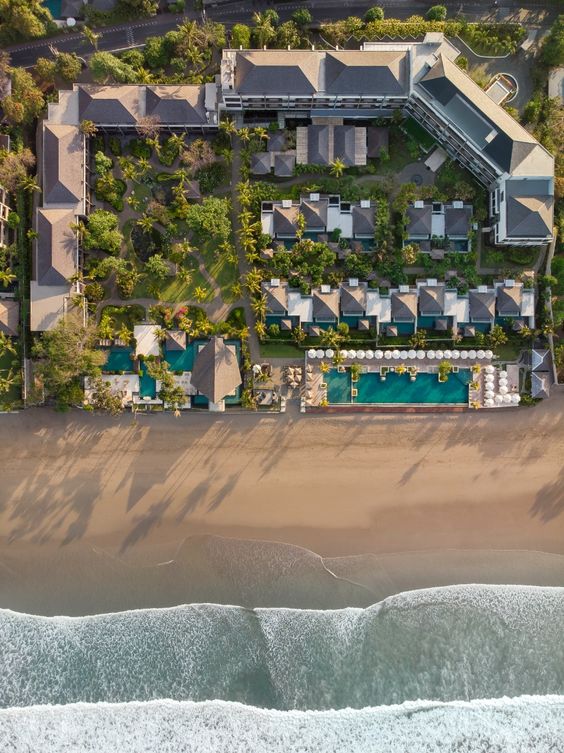
Why should you choose Glamorous to design your resort?
- Exquisite Resort Design: Glamorous Design presents an epitome of elegance and sophistication.
- Meticulous Craftsmanship: Our talented designers meticulously craft every detail, from architecture to decor, ensuring seamless luxury and functionality.
- Inviting Spaces: We create captivating spaces with a keen eye for detail and a commitment to excellence, elevating the guest experience.
- Unparalleled Beauty: From opulent rooms to lavish amenities and breathtaking landscapes, our timeless charm leaves a lasting impression.
- Transform Your Vision: Trust Glamorous Design to turn your dream resort into a reality of unparalleled beauty and refinement.
Elevate your resort with Glamorous Design. Contact us to discuss your project and discover how we turn your vision into a stunning reality.
FAQ
How to design a resort architecture?
Designing resort architecture involves conducting thorough research, developing a concept, creating a master plan, designing individual buildings, incorporating amenities, and collaborating with a team of architects, engineers, and designers.
Who designs a resort?
Resorts are designed by teams of architects, landscape architects, interior designers, and specialists who collaborate with the resort owner or developer to bring the vision to life.
What is resort-style architecture?
Resort-style architecture is characterized by elements that evoke relaxation, luxury, and escape, including open floor plans, natural materials, seamless indoor-outdoor transitions, water features, landscaping, and sustainability principles.




